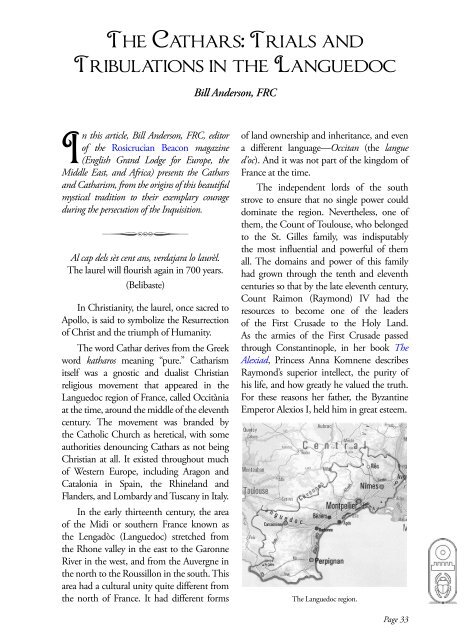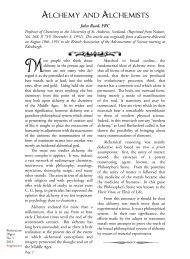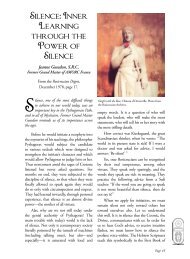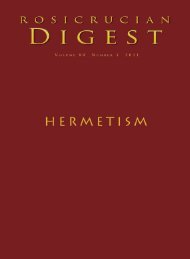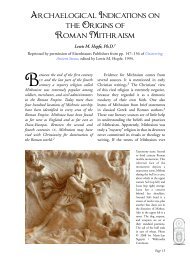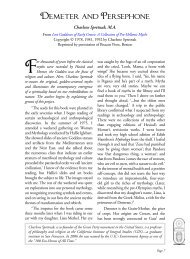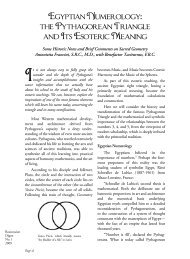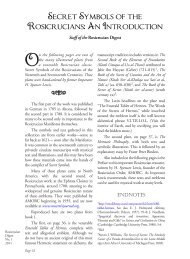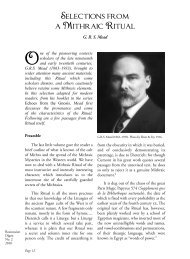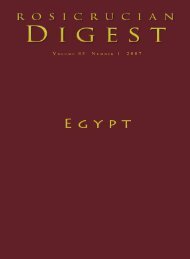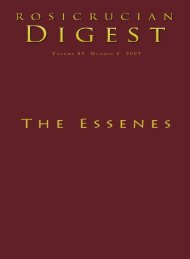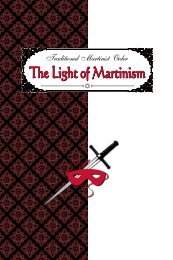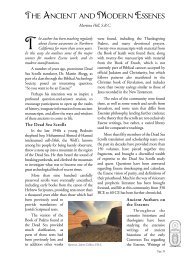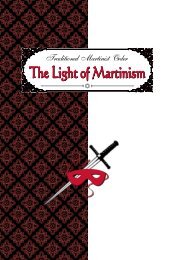Rosicrucian Digest Vol 89 No 2 2011 Gnosticism - Rosicrucian Order
Rosicrucian Digest Vol 89 No 2 2011 Gnosticism - Rosicrucian Order
Rosicrucian Digest Vol 89 No 2 2011 Gnosticism - Rosicrucian Order
Create successful ePaper yourself
Turn your PDF publications into a flip-book with our unique Google optimized e-Paper software.
The Cathars: Trials and<br />
Tribulations in the Languedoc<br />
Bill Anderson, FRC<br />
In this article, Bill Anderson, FRC, editor<br />
of the <strong>Rosicrucian</strong> Beacon magazine<br />
(English Grand Lodge for Europe, the<br />
Middle East, and Africa) presents the Cathars<br />
and Catharism, from the origins of this beautiful<br />
mystical tradition to their exemplary courage<br />
during the persecution of the Inquisition.<br />
Al cap dels sèt cent ans, verdajara lo laurèl.<br />
The laurel will flourish again in 700 years.<br />
(Belibaste)<br />
In Christianity, the laurel, once sacred to<br />
Apollo, is said to symbolize the Resurrection<br />
of Christ and the triumph of Humanity.<br />
The word Cathar derives from the Greek<br />
word katharos meaning “pure.” Catharism<br />
itself was a gnostic and dualist Christian<br />
religious movement that appeared in the<br />
Languedoc region of France, called Occitània<br />
at the time, around the middle of the eleventh<br />
century. The movement was branded by<br />
the Catholic Church as heretical, with some<br />
authorities denouncing Cathars as not being<br />
Christian at all. It existed throughout much<br />
of Western Europe, including Aragon and<br />
Catalonia in Spain, the Rhineland and<br />
Flanders, and Lombardy and Tuscany in Italy.<br />
In the early thirteenth century, the area<br />
of the Midi or southern France known as<br />
the Lengadòc (Languedoc) stretched from<br />
the Rhone valley in the east to the Garonne<br />
River in the west, and from the Auvergne in<br />
the north to the Roussillon in the south. This<br />
area had a cultural unity quite different from<br />
the north of France. It had different forms<br />
of land ownership and inheritance, and even<br />
a different language—Occitan (the langue<br />
d’oc). And it was not part of the kingdom of<br />
France at the time.<br />
The independent lords of the south<br />
strove to ensure that no single power could<br />
dominate the region. Nevertheless, one of<br />
them, the Count of Toulouse, who belonged<br />
to the St. Gilles family, was indisputably<br />
the most influential and powerful of them<br />
all. The domains and power of this family<br />
had grown through the tenth and eleventh<br />
centuries so that by the late eleventh century,<br />
Count Raimon (Raymond) IV had the<br />
resources to become one of the leaders<br />
of the First Crusade to the Holy Land.<br />
As the armies of the First Crusade passed<br />
through Constantinople, in her book The<br />
Alexiad, Princess Anna Komnene describes<br />
Raymond’s superior intellect, the purity of<br />
his life, and how greatly he valued the truth.<br />
For these reasons her father, the Byzantine<br />
Emperor Alexios I, held him in great esteem.<br />
The Languedoc region.<br />
Page 33


